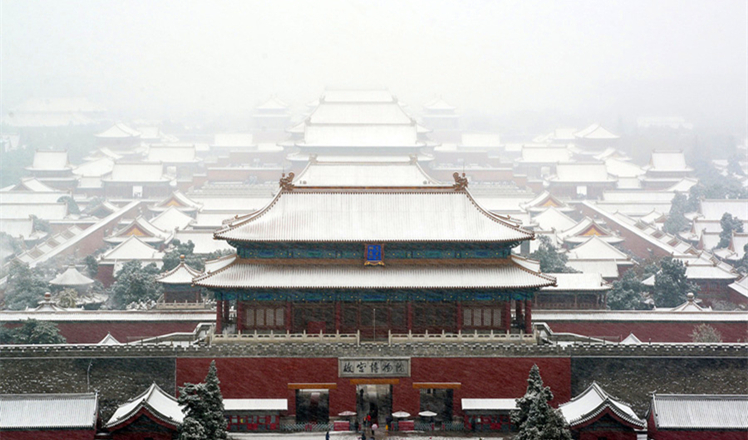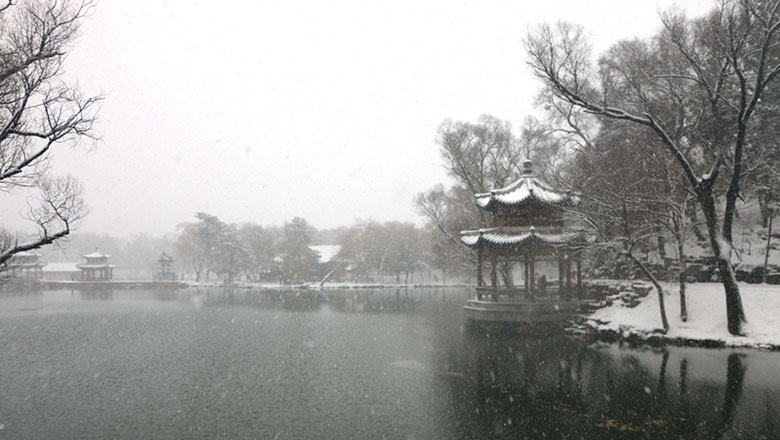Yugur people and Sunan Yugur autonomous county
Updated: 2015-11-23 07:18
By Li Yang(China Daily USA)
|
||||||||
The Yugurs are an ancient nomadic people, descendents of a branch of the Uygurs who prospered during the Song Dynasty (960-1279) around the southeast Tarim Basin in Central Asia.
Most Yugurs raise animals in the snow-capped plateaus and desert grasslands of the northern region of the Qilian mountain range in today's Sunan Yugur autonomous county in Gansu province, having migrated there after religious conflicts and devastating sandstorms in the early 15th century during the Ming Dynasty (1368-1644).
About 10,000 Yugur people live in Sunan, the only county in China where Yugurs are predominant. About 300 Yugurs live in the Xinjiang Uygur autonomous region and another 1,600 live throughout the rest of the country.
Most Yugurs live in tents that are easy to move during the seasons when they are herding cattle or hunting in the grasslands. In the winter, they live in brick houses. Their traditional diet includes beef, mutton, milk, barley, other grains and tea.
Sunan was a busy transportation and exchange hub in the Hexi Corridor, also known as the Gansu Corridor, along the northern ancient Silk Road. About 15 ethnic groups settled in the county, which covers an area of 24,000 square kilometers and is known for its diverse landscapes, from grasslands to snow-covered mountains.
After the county was established in 1954, the livelihoods of the Yugur people steadily improved. The county offers 15 years of free education, and the average annual personal income of a herdsman is nearly $2,500. Incomes have been rising at more than 10 percent every year since 2000.
Most Yugur people speak Mandarin in addition to their own language, which is a spoken language that evolved from the Turkic and Mongolian branches of the Altaic languages.
Traditional Yugur costumes are colorful and rich in symbolic meanings. High collars and hats with tassels are distinctive features of traditional Yugur clothing, which favors bright contrasting colors such as red, yellow, blue, green and white. They normally wear cloth boots with special patterns that resemble plants, animals, clouds, stars, the sun and the moon.
Yugur herdsmen use simple hand-made tools to make many of the daily necessities for working with their cattle, sheep and camels, from ropes and bags to saddles and wooden milk pails.
After the Qing Dynasty (1644-1911), the Yugur people were divided into seven tribes. Most of them believe in Tibetan Buddhism. They are known for a talent with storytelling, singing and dancing, which helped them pass on their tradition and culture to their descendants.
(China Daily USA 11/23/2015 page5)

 Premier Li meets old friends at specialty shop in Malacca
Premier Li meets old friends at specialty shop in Malacca
 Top 10 must-see debuts of 2015 Guangzhou Auto Show
Top 10 must-see debuts of 2015 Guangzhou Auto Show
 Snowfall brings beauty in Beijing winter
Snowfall brings beauty in Beijing winter
 The world in photos: Nov 16 - 22
The world in photos: Nov 16 - 22
 List of winners at the 2015 American Music Awards
List of winners at the 2015 American Music Awards
 Indian PM praises Premier Li's philosophy on economy
Indian PM praises Premier Li's philosophy on economy
 Snow hits North China as temperature drops
Snow hits North China as temperature drops
 'Burn the Floor' thrills its Beijing audience
'Burn the Floor' thrills its Beijing audience
Most Viewed
Editor's Picks

|

|

|

|

|

|
Today's Top News
Chinese president arrives in Turkey for G20 summit
Islamic State claims responsibility for Paris attacks
Obama, Netanyahu at White House seek to mend US-Israel ties
China, not Canada, is top US trade partner
Tu first Chinese to win Nobel Prize in Medicine
Huntsman says Sino-US relationship needs common goals
Xi pledges $2 billion to help developing countries
Young people from US look forward to Xi's state visit: Survey
US Weekly

|

|